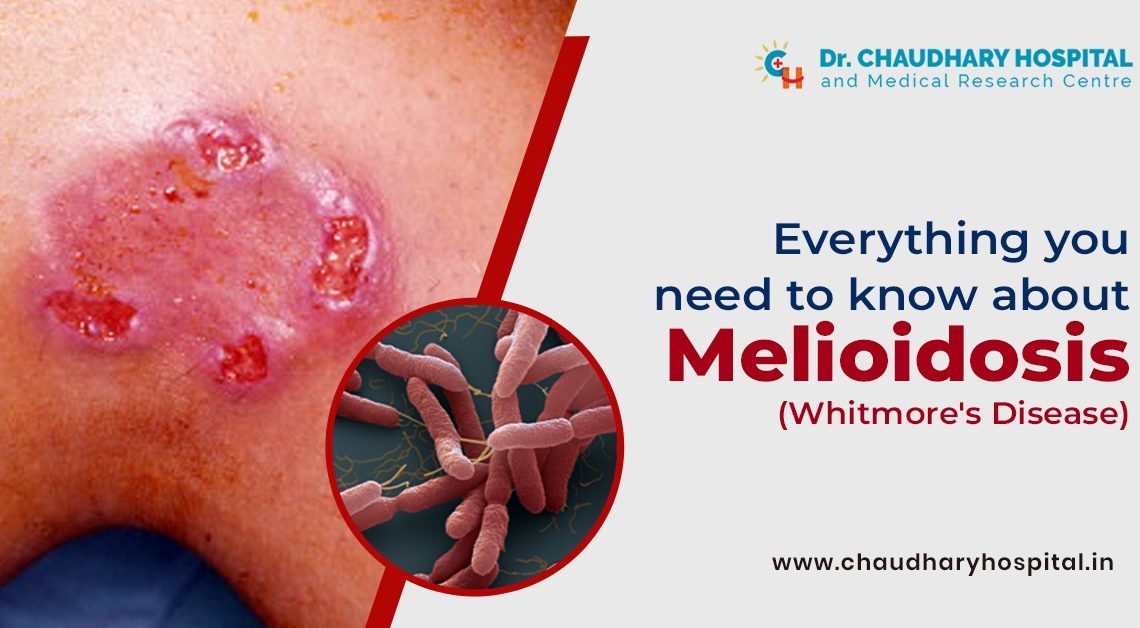Melioidosis is a bacterial infection that can affect both humans and animals. It is also known as Whitmore’s disease. It is caused by the bacteria Burkholderia pseudomallei. These bacteria have the potential to pollute water or soil. People can contract the sickness if they:
- Inhale contaminated water or dust.
- Consume or drink anything that has come into contact with these sources.
- Make touch with contaminated dirt or water on your skin.
- Use of aromatherapy sprays or essential oils
Melioidosis is mainly found in tropical climates. It most often occurs in Thailand, Malaysia, Singapore, and northern Australia. Cases are also reported frequently in:
- India
- Sri Lanka
- Southern China
- Hong Kong
- Taiwan
- Vietnam
- Indonesia
- Cambodia
- Laos
- Myanmar (Burma)
Less often, it’s found in other parts of the world, including a few cases in the United States and Europe.
What are the Symptoms of Melioidosis?
Melioidosis infections can range from moderate to severe. You might not have any symptoms. You could have a localised infection in a certain place of your body. Alternatively, the disease could impact your lungs, bloodstream, or multiple sections of your body all at once. It can be lethal if left untreated.
Because it can affect practically any organ, it might be confused with other diseases such as tuberculosis or pneumonia.
In animals, infections with no symptoms are prevalent. However, depending on the type of infection, melioidosis can induce a variety of symptoms in animals. It is capable of infecting a wide range of animals, including dogs, cats, sheep, goats, pigs, cattle, and horses.
A localised melioidosis infection typically affects only one area of your skin. It could lead to:
- Fever
- Pain and swelling in that area
- Abscesses (pus-filled areas)
- Sores
Lung (pulmonary) infections can lead to:
- Headache
- Cough
- Chest pain
- High fever
- Loss of appetite
Signs of a bloodstream infection can include:
- Fever
- Headache
- Discomfort in the belly area
- Trouble breathing
- Confusion
- Joint pain
A widespread infection may cause:
- Weight loss
- Fever
- Muscle or joint pain
- Stomach or chest pain
- Headache
- Seizures
- Central nervous system or brain infection
Symptoms often emerge 2 to 4 weeks following exposure to the pathogen. However, specialists have not specified the time between exposure and the onset of symptoms.
Who is predisposed to Melioidosis?
Even persons who are otherwise healthy can become sick. Those with medical issues, on the other hand, are at a higher risk of contracting a serious illness. The following conditions increase your risk:
- Disease of the Liver
- Diabetes
- Renal (kidney) disease
- Thalassemia is a genetic blood condition.
- Cystic fibrosis, chronic obstructive pulmonary disease (COPD), and bronchiectasis are all chronic lung illnesses.
Diagnosis of Melioidosis
A melioidosis infection can be diagnosed by extracting Burkholderia pseudomallei bacteria from:
- The blood test
- Urine specimen
- Swab your throat
- Skin lesion examination
- Abscesses
Doctors may also check for an antibody response to the bacterium to diagnose it. They may recognise the diagnosis as:
- A localised infection is one that affects only one portion of the body.
- Infection of the lungs
- Infection of the bloodstream
- Infection that has spread to different organs in the body is known as disseminated infection.
How Is Melioidosis Treated?
IV antibiotic medicines are normally used for at least two weeks and up to eight weeks for severe infections. Your doctor will then prescribe oral antimicrobials for 3 to 6 months.
- ceftazidime (Fortaz, Tazicef), given every six to eight hours
- meropenem (Merrem), given every eight hours
The second stage of treatment is three to six months of one of these two oral antibiotics:
- sulfamethoxazole-trimethoprim (Bactrim, Septra, Sulfatrim), taken every 12 hours
- doxycycline (Adoxa, Alodox, Avidoxy, Doryx, Monodox), taken every 12 hours
Relapses don’t occur as often as they once did. They occur mostly in people who don’t complete the full course of antibiotics.
What preventive measures could be taken for Melioidosis?
To reduce your risk of infection in disease-infested areas:
- Contact with soil and standing water should be avoided, especially if you have open wounds or other risk factors.
- Wear boots and gloves when going outside to protect yourself.
- After working with the earth, wash your hands.
- Cover cuts and scrapes with waterproof bandages.
Outlook for melioidosis
Despite modern IV antibiotic therapies, a considerable number of individuals die each year from melioidosis, notably from sepsis and its consequences. Death rates are higher in locations where medical treatment is scarce. Travellers to high-risk locations should be aware of the disease and take precautions to reduce their exposure. If tourists return from tropical or subtropical countries and get pneumonia or septic shock, their doctors should investigate melioidosis as a possible diagnosis.


